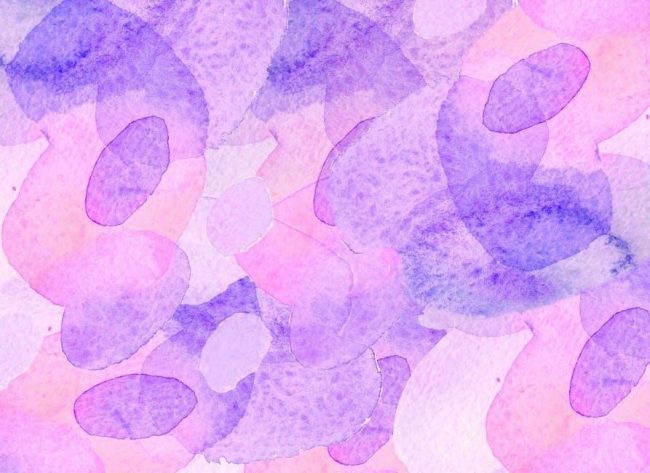Watercolor tutorial books are comprehensive guides offering step-by-step tutorials, techniques, and inspiration for artists of all levels. They provide structured learning, helping beginners build confidence and explore various styles while understanding fundamentals.
1.1 What is a Watercolor Tutorial Book?
A watercolor tutorial book is a comprehensive guide designed to teach artists the fundamentals and advanced techniques of watercolor painting. These books typically include step-by-step instructions, illustrations, and exercises to help learners master various styles and methods. They often cover essential topics such as color theory, brushwork, and composition, making them invaluable resources for both beginners and experienced artists. By breaking down complex techniques into manageable lessons, watercolor tutorial books provide a structured path for artistic growth and creativity.
1.2 Why Watercolor Tutorial Books Are Essential for Learning
Watercolor tutorial books are indispensable for learners, offering comprehensive guidance and expert tips to refine skills. They provide a structured learning path, helping artists progress logically from basics to advanced techniques. These books build confidence by breaking down complex methods into manageable steps. They also inspire creativity through vibrant illustrations and real-world examples. Unlike online tutorials, books offer a tactile, focused learning experience, allowing artists to absorb information at their own pace and revisit concepts as needed for mastery.
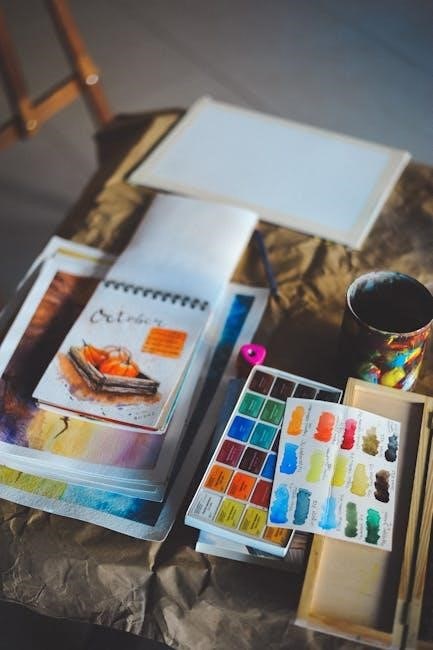
Importance of Watercolor Painting Books
Watercolor painting books are curated, comprehensive guides offering structured learning, expert techniques, and inspiration; They provide in-depth knowledge and practical exercises, serving as essential resources for artists.
2.1 Benefits of Learning from Watercolor Books
Watercolor books offer comprehensive guides, expert techniques, and inspiration, helping artists master the medium. They provide structured learning, practical exercises, and visual examples, building confidence and skills. These resources cover fundamentals like color theory and brushwork, while exploring advanced techniques. Books inspire creativity, offer step-by-step tutorials, and cater to all skill levels, making them invaluable for consistent growth and artistic development.
2.2 How Books Provide a Structured Learning Experience
Watercolor books organize content into logical chapters, guiding artists from basics to advanced techniques. They include detailed demonstrations, step-by-step projects, and practical exercises, ensuring a progressive learning path. This structured approach helps build a strong foundation, improve technical skills, and enhance artistic confidence. The clear curriculum motivates learners to stay focused, while the cumulative knowledge ensures mastery of watercolor painting principles and methods.
2.3 The Role of Books in Building a Solid Foundation in Watercolor
Watercolor books provide a comprehensive introduction to essential techniques, tools, and materials, ensuring artists grasp fundamental concepts. They offer clear, step-by-step instructions and exercises tailored to skill levels, helping beginners avoid common mistakes. By covering color theory, brushwork, and composition, books establish a solid foundation, enabling consistent progress. This structured approach, combined with practical examples and inspiration, empowers artists to develop confidence and mastery over time, making books indispensable for building lasting watercolor skills.
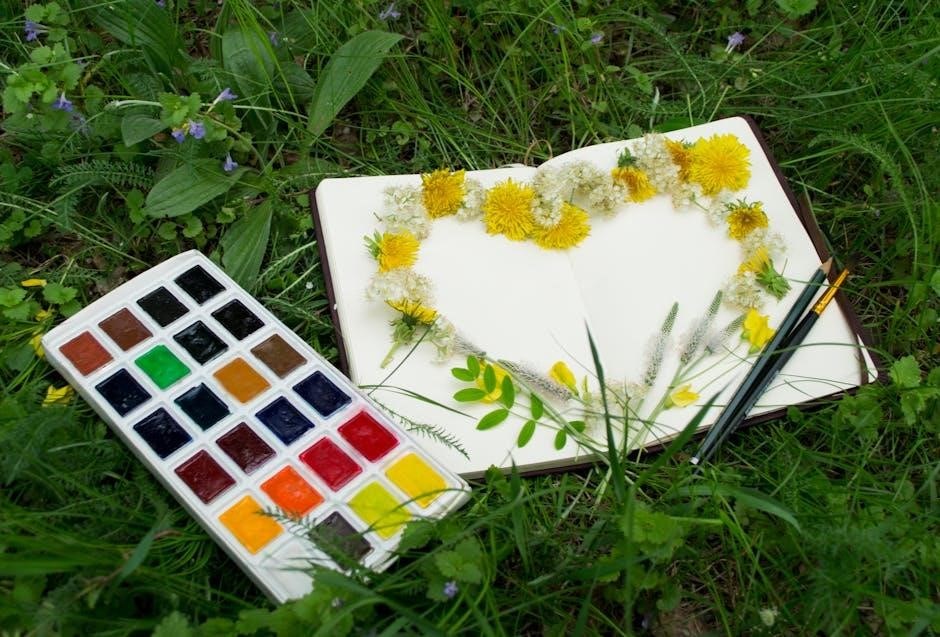
Content Overview of a Comprehensive Watercolor Tutorial Book
A comprehensive watercolor tutorial book covers tools, materials, and essential techniques, offering step-by-step tutorials, exercises, and visual examples. It guides learners from basics to advanced methods, ensuring a well-rounded understanding of the medium.
3.1 Tools and Materials for Watercolor Painting
A comprehensive watercolor tutorial book begins with essential tools and materials. These include high-quality watercolor paints, natural hair or synthetic brushes, cold-pressed or hot-pressed paper, a palette, water containers, and optional tools like masking fluid or tape. The book explains how to choose the right materials, ensuring durability and optimal results. It also covers proper care and maintenance of brushes and paints, helping artists build a solid foundation for their creative journey. These tools are vital for mastering techniques and achieving desired effects in watercolor painting.
3.2 Basic Techniques Every Beginner Should Know
Watercolor tutorial books emphasize essential techniques such as wet-on-wet, wet-on-dry, and glazing. These methods teach how to layer and blend colors effectively. Beginners learn to create smooth washes, mix hues, and achieve soft edges. Understanding these fundamentals is crucial for mastering control and precision. Practice exercises often accompany these lessons, helping artists build confidence. These techniques form the foundation for more complex projects, allowing learners to explore various styles and creative expressions in their watercolor journey.
3.3 Step-by-Step Tutorials for Practice
Watercolor tutorial books provide detailed, step-by-step guides for practicing essential techniques. These tutorials often start with simple exercises, such as painting basic shapes or mixing colors, and gradually progress to more complex projects. Each tutorial is designed to help artists build skills and confidence. By following these structured lessons, learners can master specific methods and apply them to create stunning watercolor artworks. The hands-on approach ensures a practical learning experience, making it easier to transition from theory to finished paintings.
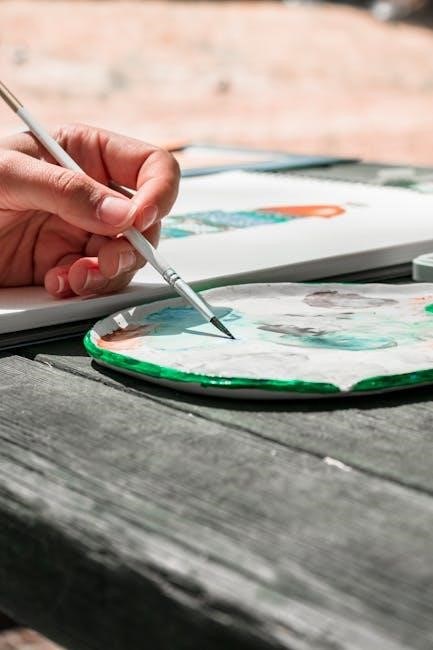
Best Watercolor Tutorial Books for Beginners
Discover top watercolor books tailored for newcomers, featuring clear instructions and inspiring projects. Titles like Everyday Watercolor, The Watercolorist’s Essential Notebook, and Watercolor for the Absolute Beginner stand out.
4.1 “Everyday Watercolor” by Jenna Rainey
Jenna Rainey’s Everyday Watercolor is a charming guide perfect for beginners. It offers step-by-step tutorials, practical exercises, and a friendly approach to learning watercolor. Rainey’s engaging style makes the process feel approachable, helping artists build confidence and explore their creativity. The book covers essential topics like tools, basic techniques, and color theory, while also encouraging experimentation. With its vibrant illustrations and accessible instructions, Everyday Watercolor is an ideal starting point for anyone eager to dive into the world of watercolor painting.
4.2 “The Watercolorist’s Essential Notebook” by Gordon MacKenzie
Gordon MacKenzie’s The Watercolorist’s Essential Notebook is a must-have for beginners, offering a thorough introduction to watercolor painting. The book covers fundamental tools, materials, and techniques, providing clear, easy-to-understand guidance. MacKenzie shares practical tips and tricks for creating vibrant, professional-quality paintings. With its focus on building a strong foundation, this notebook is a valuable resource for anyone looking to master the basics of watercolor and unlock their creative potential.
4.3 “Watercolor for the Absolute Beginner” by Mark Willenbrink
Watercolor for the Absolute Beginner by Mark Willenbrink is a step-by-step guide tailored for those new to watercolor painting. The book simplifies the learning process, offering clear instructions and practical exercises to build confidence. Willenbrink covers essential topics like color theory, brushwork, and composition, making it easy for beginners to grasp the fundamentals. With its approachable style and focus on gradual skill development, this book is an excellent starting point for anyone eager to explore the world of watercolor painting.
4.4 “Watercolor School” by Hazel Soan
Watercolor School by Hazel Soan is a comprehensive guide designed for beginners, offering a structured approach to mastering watercolor painting. The book covers essential topics such as color theory, brushwork, and composition, while providing practical exercises to enhance skills. Soan’s clear instructions and step-by-step tutorials make complex techniques accessible. With a focus on building confidence, this book is an excellent resource for those looking to improve their understanding of watercolor fundamentals and explore creative possibilities in their artwork. The book is both informative and inspiring, making it a valuable addition to any artist’s library.
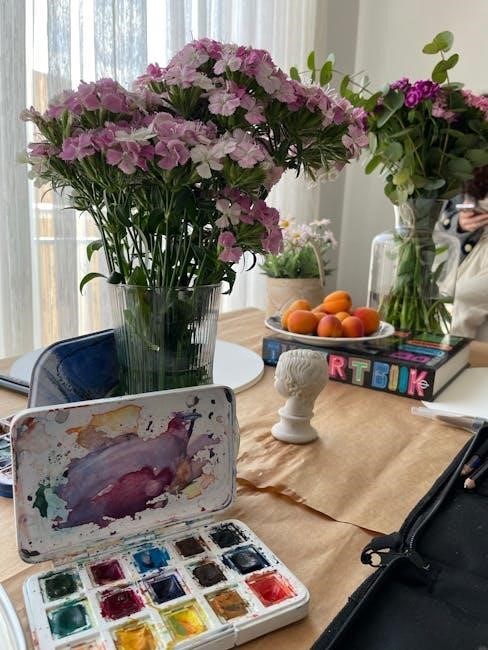
Intermediate and Advanced Watercolor Techniques
Explore advanced methods like glazing, layering, and creating texture to add depth and complexity to your paintings. These techniques help achieve vibrant, detailed, and dynamic watercolor works.
5.1 Glazing and Layering in Watercolor
Glazing and layering are advanced watercolor techniques that involve applying multiple thin, transparent layers of paint to achieve deep, rich colors and luminosity. These methods allow artists to build complex, detailed compositions with depth and dimension. By layering washes, artists can create intricate textures and subtle shifts in tone, enhancing the overall impact of their work. These techniques are particularly effective for capturing light effects, atmospheric perspectives, and intricate details in both realistic and abstract pieces.
5.2 Creating Texture and Depth in Paintings
Creating texture and depth in watercolor paintings involves layering transparent washes and experimenting with techniques like wet-on-wet, glazing, and drybrushing. These methods allow artists to achieve intricate textures and dimensional effects. Using tools such as spray bottles or salt can enhance texture, while layered washes build depth. These techniques transform flat compositions into dynamic, visually engaging works, adding emotional resonance and complexity to the artwork.
5.3 Painting Skies and Water with Watercolors
Painting skies and water with watercolors requires mastering fluid washes and soft blends. Skies often involve gradient washes, while water demands dynamic brushstrokes to capture movement. Techniques like wet-on-wet create smooth transitions for skies, while drybrushing adds texture for water. Layering glazes enhances depth and luminosity, making these elements stand out. Practice and patience are key to achieving realistic and captivating representations of these subjects in watercolor art.

Advanced Watercolor Tutorial Books
Advanced watercolor tutorial books cater to intermediate and experienced artists, offering intricate techniques like glazing, layering, and texture creation to refine their skills and artistic expression.
6.1 “Mastering Watercolors” by Joe Cartwright
“Mastering Watercolors” by Joe Cartwright is a comprehensive guide for intermediate to advanced artists. It focuses on advanced techniques such as glazing, layering, and creating intricate textures. Cartwright shares insights on mastering challenging subjects like skies and water, offering detailed step-by-step instructions. The book is both practical and inspiring, encouraging artists to experiment and push their creative boundaries. With stunning illustrations, it serves as a valuable resource for refining skills and achieving professional-quality watercolor paintings.
6.2 “Watercolor Techniques” by Michael Reardon
“Watercolor Techniques” by Michael Reardon is a detailed guide for intermediate and advanced artists. It focuses on capturing light, color, and atmosphere in landscapes and cityscapes. Reardon shares expert tips for creating depth and texture, with stunning examples to inspire. The book provides clear, technical instruction while encouraging artistic expression. It’s a valuable resource for refining skills and mastering complex watercolor techniques, making it ideal for those looking to elevate their art and explore new creative possibilities.
6.3 “The Watercolor Course You’ve Always Wanted” by Leslie Frontz
Leslie Frontz’s “The Watercolor Course You’ve Always Wanted” is a comprehensive guide designed for intermediate and advanced artists. It offers a structured approach to mastering watercolor techniques, from fundamentals to advanced concepts like value and contrast. The book features exercises and step-by-step tutorials that encourage creativity and skill development. Frontz’s engaging style and detailed instruction make it an excellent choice for artists seeking to refine their skills and develop a unique artistic voice, fostering growth and artistic exploration.
Specific Tutorials and Projects
This section offers detailed, step-by-step guides for creating stunning watercolor artworks, from delicate florals to vibrant landscapes, helping artists explore diverse styles and techniques effectively.
7.1 Painting Florals and Botanicals
Watercolor tutorial books often feature detailed guides for painting florals and botanicals, helping artists capture the delicate beauty of flowers and plants. Step-by-step instructions teach how to layer washes, mix vibrant colors, and create intricate textures. These tutorials emphasize the importance of observation and precision, allowing artists to render realistic and expressive botanical designs. From simple blooms to complex compositions, these projects encourage creativity and experimentation, helping artists refine their skills and develop a personal style in watercolor botanical painting.
7.2 Landscapes and Cityscapes in Watercolor
Watercolor tutorial books often include sections dedicated to painting landscapes and cityscapes, offering techniques to capture the essence of natural and urban environments. Tutorials guide artists in rendering skies, water, and architecture, emphasizing layering, blending, and color harmony. These projects help artists master perspective, depth, and atmospheric effects, whether painting serene landscapes or bustling city scenes. Step-by-step instructions and vibrant examples inspire creativity, allowing artists to explore diverse styles and refine their skills in depicting dynamic and evocative scenes in watercolor.
7.3 Abstract and Expressive Watercolor Projects
Watercolor tutorial books often feature sections on abstract and expressive painting, encouraging artists to experiment with loose brushwork, vibrant color mixing, and emotive washes. These projects focus on breaking free from traditional representation, allowing artists to explore personal expression and creativity. Tutorials guide learners in creating dynamic, non-realistic compositions, emphasizing texture, movement, and mood. With inspiring examples and step-by-step exercises, artists can discover the freedom of abstract watercolor, transforming emotions and ideas into captivating, one-of-a-kind artworks that celebrate spontaneity and individuality.
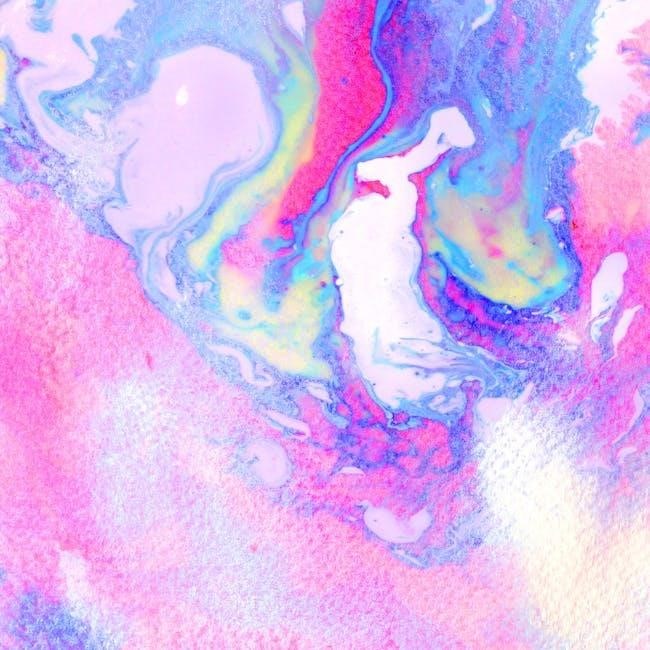
Exercises and Practice Projects
Exercises and practice projects in watercolor books help build skills and confidence through hands-on application of techniques, fostering consistent improvement and artistic growth.
8.1 Building Confidence with Simple Exercises
Simple exercises in watercolor books are designed to help artists build confidence gradually. Starting with basic techniques like color mixing and brushwork, these exercises lay a strong foundation. They allow learners to practice core skills without feeling overwhelmed, fostering creativity and consistency. Step-by-step tutorials guide artists through manageable tasks, helping them see progress and gain self-assurance. Over time, these exercises reduce intimidation and encourage exploration of more complex methods, ensuring a steady improvement in watercolor painting abilities and artistic expression;
8.2 Turning Exercises into Finished Paintings
Turning exercises into finished paintings is a transformative process that bridges practice and creativity. Watercolor books guide artists in refining their skills, offering step-by-step tutorials that build confidence. By mastering basic techniques like color mixing and composition, artists can apply these skills to create cohesive, polished works. Exercises evolve into finished paintings through careful planning, layering, and attention to detail, fostering a sense of accomplishment and artistic growth. This progression encourages creativity and helps artists develop a personal style, turning simple practices into stunning, complete pieces.
The Role of Color Theory in Watercolor
Color theory is fundamental to watercolor, enabling artists to mix vibrant, harmonious colors. Understanding the color wheel and pigment interactions is essential for creating stunning, balanced paintings.
9.1 Understanding the Color Wheel
The color wheel is a circular representation of colors, showing how they relate and harmonize. It helps watercolor artists understand primary and secondary colors, warm and cool tones, and how to create contrast and balance in paintings. By mastering the color wheel, artists can mix vibrant hues and achieve harmonious color schemes, enhancing the emotional impact of their work. This foundational knowledge is essential for creating visually appealing watercolor pieces.
9.2 Mixing Colors for Vibrant and Harmonious Paintings
Mixing colors is a cornerstone of watercolor painting, enabling artists to create vibrant, harmonious works. By understanding primary and secondary colors, warm and cool tones, and color theory, artists can craft rich, dynamic palettes. Techniques like glazing and layering enhance depth and luminosity, while careful mixing ensures balanced compositions. This skill allows painters to evoke emotions and capture the essence of their subjects, transforming simple washes into captivating, visually appealing watercolor art.
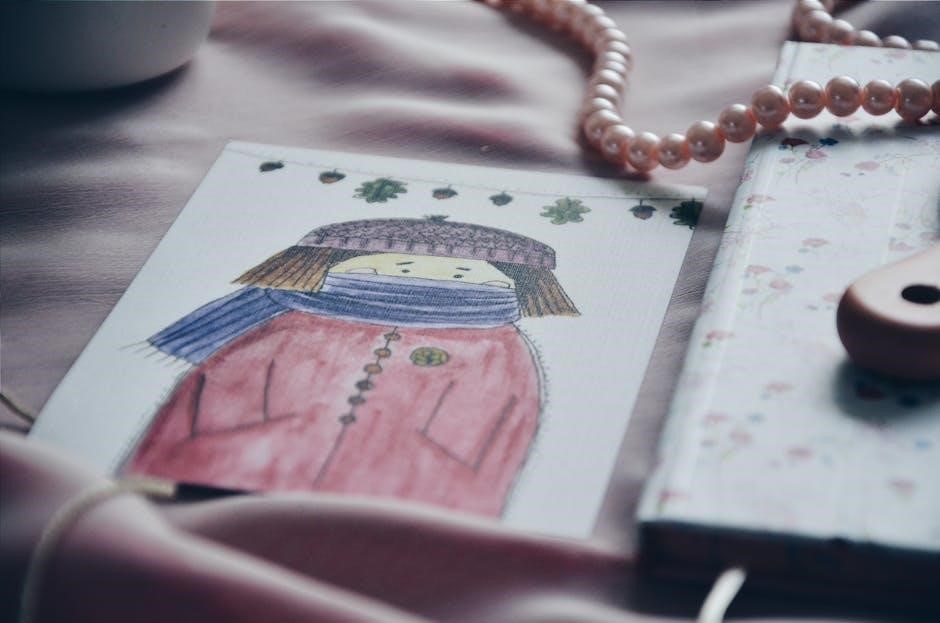
Inspiration and Creativity in Watercolor
Watercolor tutorial books inspire creativity by exploring nature, personal experiences, and experimental techniques. They guide artists to overcome blocks and find motivation in everyday life and art.
10.1 Overcoming Creative Blocks
Overcoming creative blocks in watercolor requires patience and practice. Tutorial books offer practical strategies, such as simple exercises and step-by-step tutorials, to reignite inspiration. Many books, like Everyday Watercolor, encourage artists to experiment with new techniques, helping to break through mental barriers. Structured learning and achievable projects build confidence, while tips from experienced artists provide guidance. By focusing on the process rather than perfection, artists can overcome frustration and unlock their creative potential, making watercolor painting a joyful and fulfilling experience.
10.2 Finding Inspiration in Nature and Everyday Life
Nature and everyday life are rich sources of inspiration for watercolor artists. Tutorial books often encourage observing natural elements like landscapes, florals, and skies. Books such as Everyday Watercolor and Watercolor School provide exercises to help artists translate these observations into vibrant paintings. By exploring personal surroundings and capturing fleeting moments, artists can discover unique perspectives. This approach fosters creativity and helps develop a personal style, making watercolor painting a meaningful and expressive journey rooted in the world around us.

The Future of Watercolor Tutorial Books
The future of watercolor tutorial books lies in blending digital and physical formats, offering interactive tutorials and multimedia resources. This evolution ensures accessibility and continued inspiration for artists worldwide.
11.1 Digital vs. Physical Books
Digital watercolor tutorial books offer convenience and accessibility, with features like zoomable images and video tutorials. However, physical books provide a tactile experience, inspiring creativity through vibrant illustrations and step-by-step guidance; Many artists prefer physical books for their aesthetic appeal and ease of use, while others value the portability of digital formats. The choice between the two often depends on personal preference and learning style, ensuring both formats remain relevant in the evolving world of watercolor education.
11.2 The Evolution of Watercolor Learning Resources
Watercolor learning resources have evolved significantly, adapting to technological advancements and changing learner preferences. Traditional physical books remain popular for their tactile experience, while digital formats now offer interactive tutorials and video demonstrations. The integration of online platforms and e-books has made learning more accessible and flexible. This shift has also enabled real-time updates and the inclusion of diverse artistic styles. As a result, watercolor education has become more dynamic, catering to both traditionalists and modern learners, ensuring a richer and more engaging learning experience for all skill levels.
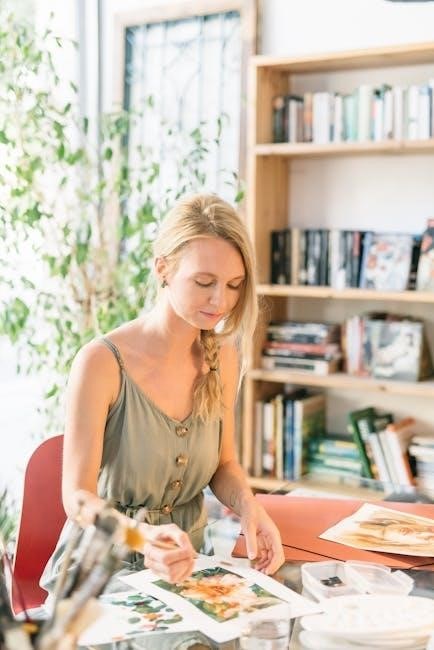
Recommended Reading for Watercolor Enthusiasts
Discover top watercolor books like Watercolor Workbook by Sarah Simon, Modern Watercolor Botanicals by Jenna Rainey, and Creative Abstract Watercolor by Kate Rebecca Leach for inspiration and skill refinement.
12.1 “Watercolor Workbook” by Sarah Simon
“Watercolor Workbook” by Sarah Simon is a fantastic resource for beginners, offering 30-minute botanical projects on premium watercolor paper. This book provides step-by-step guides to help artists build confidence and refine their skills. With a focus on simplicity and creativity, it includes exercises designed to familiarize readers with essential techniques. Perfect for those new to watercolor, Simon’s workbook combines practical instruction with beautiful, achievable projects. It’s a great way to explore the medium while creating stunning floral and botanical art. Ideal for busy learners, it ensures steady progress and artistic growth.
12.2 “Modern Watercolor Botanicals” by Jenna Rainey
“Modern Watercolor Botanicals” by Jenna Rainey is a creative workshop that blends traditional watercolor techniques with contemporary style. This book offers a fresh approach to painting botanicals, focusing on expressive brushwork and vibrant color. With step-by-step tutorials and inspiring projects, Rainey guides artists in capturing the beauty of flowers and plants. Perfect for artists of all levels, it emphasizes experimentation and artistic growth. The book’s modern aesthetic and practical lessons make it a must-have for those seeking to infuse their watercolor practice with fresh inspiration and flair.
12.3 “Creative Abstract Watercolor” by Kate Rebecca Leach
“Creative Abstract Watercolor” by Kate Rebecca Leach is a vibrant guide to exploring abstract expression through watercolor. This book encourages artists to embrace spontaneity and freedom, breaking free from traditional norms. Leach provides innovative exercises, prompts, and tips to help artists unlock their creativity. With inspiring imagery and practical advice, it empowers both beginners and experienced painters to experiment with bold colors, textures, and unique techniques. Perfect for those seeking to push boundaries, this book transforms watercolor into a tool for self-expression and artistic innovation.
Mastery of watercolor painting requires patience, practice, and exploration. With the right resources and dedication, artists can unlock the medium’s full potential, fostering creativity and growth.
13.1 Final Thoughts on Mastering Watercolor
Mastering watercolor painting is a journey of patience, creativity, and continuous learning. It requires embracing challenges and celebrating small victories. Through dedication and practice, artists can unlock the medium’s unique beauty. Inspiration from nature, everyday life, and renowned artists fuels progress. Watercolor tutorial books provide invaluable guidance, offering structured lessons and expert tips. Whether you’re a beginner or an advanced artist, these resources empower you to refine techniques, explore new styles, and express your vision. Remember, growth comes from persistence and a willingness to experiment and learn.
13.2 Encouragement to Keep Practicing and Exploring
Remember, watercolor painting is a lifelong journey of discovery and growth. Every stroke, every painting, and every mistake is a step forward. Don’t be afraid to experiment and explore new techniques—this is where the magic happens. Celebrate your progress, no matter how small, and stay inspired by the world around you. With consistent practice and an open mind, you’ll continue to evolve as an artist. Keep embracing the process, and let your passion for watercolor guide you to new creative heights.
